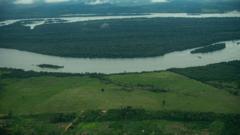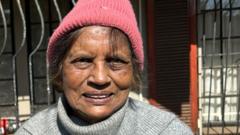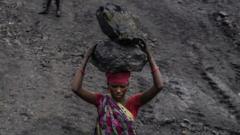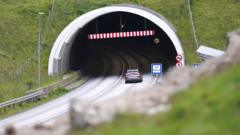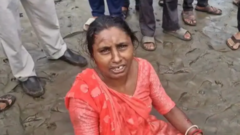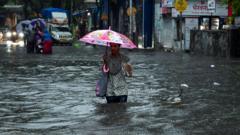This article explores the contradiction faced by residents of Pampa Clemesí, who live near the Rubí solar plant yet have no access to electricity. While Peru is experiencing a renewable energy surge, the lack of infrastructure for sparsely populated areas leaves many in the dark, raising important questions about energy equity.
The Solar Paradox: Peru's Power Plants Shine While Local Residents Live in Darkness
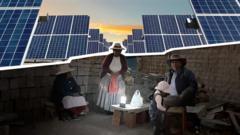
The Solar Paradox: Peru's Power Plants Shine While Local Residents Live in Darkness
Despite being neighbors to Peru's largest solar complex, residents of Pampa Clemesí remain unconnected to the grid, highlighting stark disparities in energy access.
Residents of Pampa Clemesí, a small village in southern Peru, can see the bright lights of the nearby Rubí solar plant yet remain without electricity in their homes. Each morning, Rosa Chamami starts her day by lighting a fire with cardboard scraps, remnants from the boxes that once held thousands of solar panels. Installed between 2018 and 2024, these panels belong to the largest solar complex in Peru and one of the largest in Latin America, located in the Moquegua region.
Despite the proximity of the Rubí plant, the 150 residents of Pampa Clemesí live in darkness, unconnected to the energy grid it supplies. A few villagers have received solar panels from the plant's operators at Orygen, but they lack the necessary batteries and converters. At night, they often rely on flashlights to navigate their homes.
The Rubí plant produces approximately 440 GWh of power each year, sufficient to supply electricity to around 351,000 homes. However, as the renewable energy sector in Peru sees significant growth—electricity generation from renewables increased by 96% in 2024—the villagers of Pampa Clemesí continue to struggle with basic power access.
Carlos Gordillo, an energy expert at the University of Santa María, explains the issue stems from a system tailored for profitability without consideration for dispersed populations. Orygen has stated it fulfilled its obligations to connect the village, having built a dedicated line and completed the first phase of an electrification project with associated costs of $800,000. Yet, the final step—connecting the villagers' homes to this line—remains the responsibility of the Ministry of Mines and Energy, which has yet to begin its work despite plans purportedly set for March 2025.
Residents described their daily lives where they find themselves walking around the village in search of someone willing to lend them a little electricity for charging personal devices. The inability to maintain a proper food supply due to the lack of refrigeration forces many to live on basic items that don't require constant storage. Furthermore, a lack of infrastructure hampers daily life, making everything from waste management to water access a challenge.
At night, the absence of reliable light sources means that families dine by torchlight and share meals in silence. Rosa lamented how a simple connection to electricity could change the lives of residents like her and Pedro Chará, a local elder who has witnessed the rise of the Rubí plant next door.
The anticipation for light remains, as many cling to the hope that one day the government's infrastructure development will reach their village. Throughout their doubts and struggles, residents express their steadfast belief in the sun—an ever-present source of hope amid persistent darkness.



